Concrete is one of the most widely used construction materials due to its strength, durability, and low cost. However, improper mixing or curing can result in excess water in concrete, weakening its structure and reducing its lifespan. Excess water can also cause cracks and disintegration of the concrete surface.
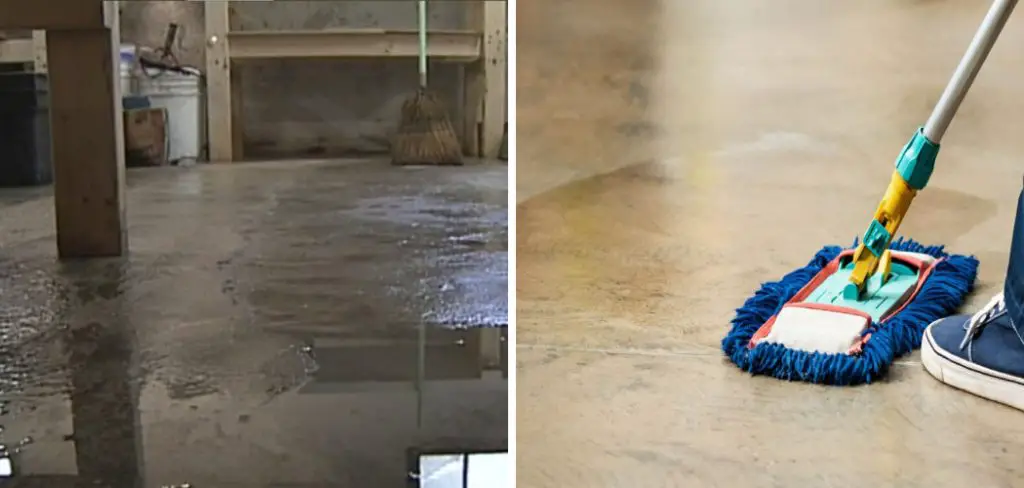
The main advantage of removing excess water from concrete is that it can help prevent damage and prolong the lifespan of your concrete structures. Excess water left in concrete can weaken its overall strength, making it more susceptible to cracking and crumbling over time. This can be especially problematic in areas with freezing temperatures, as the trapped water can expand when frozen and cause further damage. In this blog post, You will learn in detail how to remove excess water from concrete.
Step-by-step Instructions for How to Remove Excess Water From Concrete
Step 1: Inspect the Concrete
Before you begin, it is important to inspect the concrete surface to determine if there are any cracks or damage. This will help you identify areas where water may be pooling and causing excess moisture.
Step 2: Clear the Area
If there are any objects on or around the area, remove them to provide more space for working. This will also prevent any potential hazards while removing the excess water. A squeegee is an effective tool to remove standing water from concrete. Start by pushing the water towards the nearest drain or low point on the surface.
Step 3: Mop Up Excess Water
Use a mop to absorb any remaining water that cannot be removed with a squeegee. Ensure the mop is fully wrung out before using it to prevent adding more water to the surface. A wet-dry vacuum can be helpful for removing excess water from concrete surfaces. Use a wide attachment and slowly move it over the surface to remove any remaining water.
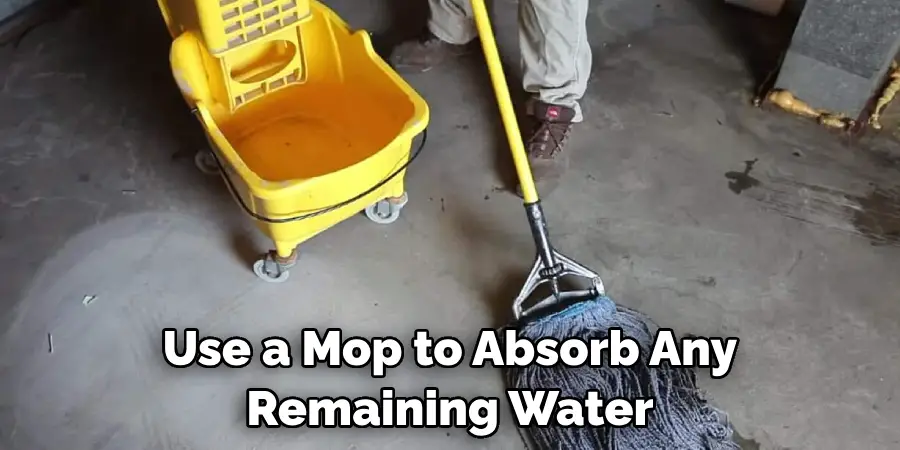
Step 4: Absorb Water with Towels or Rags
For smaller areas, you can use towels or rags to absorb the excess water. Press down on the surface and move the towel in a circular motion to pick up as much water as possible. Set up fans around the concrete surface to help speed up the drying process. This will also promote air circulation and prevent mold or mildew from forming.
Step 5: Apply Salt
Sprinkle salt over the wet areas as it absorbs moisture, making it easier to remove excess water. Leave the salt on for a few hours before sweeping it up. If the area is indoors, use dehumidifiers to remove excess moisture from the air. This will help dry out the concrete surface faster.
Step 6: Use a Concrete Sealant
Once the area is completely dry, consider applying a concrete sealant to prevent future water damage. This will also help protect the surface from stains and spills. If you continuously have excess water on your concrete surfaces, it may be a sign of poor drainage. Consider hiring a professional to assess and fix any drainage issues.
Step 7: Prevent Future Water Damage
To prevent excess water from accumulating on your concrete surfaces, regularly clean and inspect them for cracks or damage. Additionally, ensure proper drainage is in place and address any issues promptly.
By following these steps, you can successfully remove excess water from your concrete surfaces and prevent any potential damage.
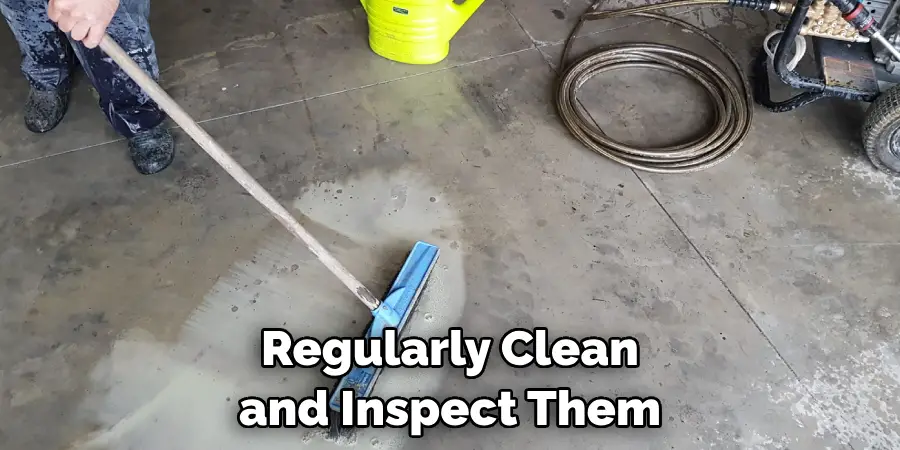
Remember to always prioritize safety and take necessary precautions when working with wet surfaces. With proper maintenance, your concrete will remain in top condition for years to come.
Precautions for How to Remove Excess Water From Concrete
- Wear proper Personal Protective Equipment (PPE) before starting the process. This includes gloves, safety glasses, and rubber boots.
- Avoid using electrical tools near standing water as it can cause electric shocks.
- Drain the excess water slowly to avoid damaging the concrete surface. A sudden release of pressure can cause cracks or breaks in the concrete.
- Use a wet vacuum or pump to remove large quantities of water quickly.
- If using a pump, make sure to monitor the drainage system to prevent any clogs or overflows.
- Consider hiring a professional if dealing with a large amount of excess water or if you are unsure of how to safely remove it yourself.
- Always follow the manufacturer’s instructions when using any chemical products such as concrete sealers or dehumidifiers during the water removal process. These products can be hazardous if not used properly.
Concrete is a durable and strong material, but it is susceptible to damage if excess water is left on its surface for too long. This can happen due to heavy rain, flooding, or even just a spill. However, with proper precautions and techniques, you can effectively remove the excess water from concrete without causing any harm.
What Are the Potential Causes of Excess Water in Concrete?
Excess water in concrete is a common problem that can occur during the construction process. It refers to the presence of more water than what is required for proper hydration and strength development of concrete. This excess water, also known as “water of convenience”, can have negative effects on the quality and durability of concrete structures. The main cause of excess water in concrete is improper mixing.
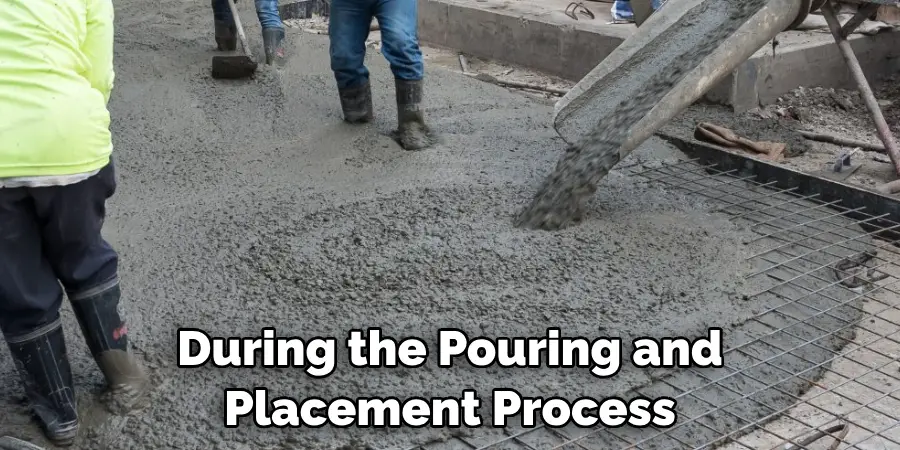
If the water-cement ratio is not properly controlled, excess water may be added to make the concrete more workable or easier to pump. This can result in a weaker and less durable concrete that is susceptible to cracking, shrinkage, and other problems. Another cause of excess water in concrete is poor compaction. During the pouring and placement process, if proper compaction techniques are not used, air and excess water may be trapped within the concrete mixture. This leads to a porous and weak concrete with poor strength and durability.
Are There Any Time-sensitive Considerations When Removing Excess Water From Concrete?
When it comes to removing excess water from concrete, there are a few important considerations to keep in mind. One of these is the timing of when you should remove the water.
If you’re dealing with freshly poured concrete, it’s crucial to start removing any excess water as soon as possible. This is because the longer the water sits on top of the concrete, the more likely it is to create surface defects or weaken the structural integrity of the concrete. Plus, if you’re working in hot and dry conditions, the water can evaporate quickly and potentially cause shrinkage cracks.
On the other hand, if you’re dealing with older concrete that has already cured, removing excess water isn’t as time-sensitive. However, it’s still important to avoid letting water sit on the surface for extended periods of time, as it can still cause damage or decrease durability.
How Does the Weather and Environment Affect the Removal of Excess Water From Concrete?
Concrete is one of the most widely used and versatile construction materials, due to its durability and strength. However, like all building materials, it is not immune to damage caused by environmental factors such as weather conditions. One common issue that can affect concrete is excess water, which can weaken its structure and compromise its integrity.
1. Weather Conditions and Excess Water in Concrete
Concrete is a porous material, meaning that it contains tiny holes or pores through which water can pass. When exposed to rain, snow, or high humidity levels, these pores can become saturated with water, leading to excess moisture within the concrete. This excess water can present several problems, including reduced strength and durability, mold growth, and freeze-thaw damage in cold climates.
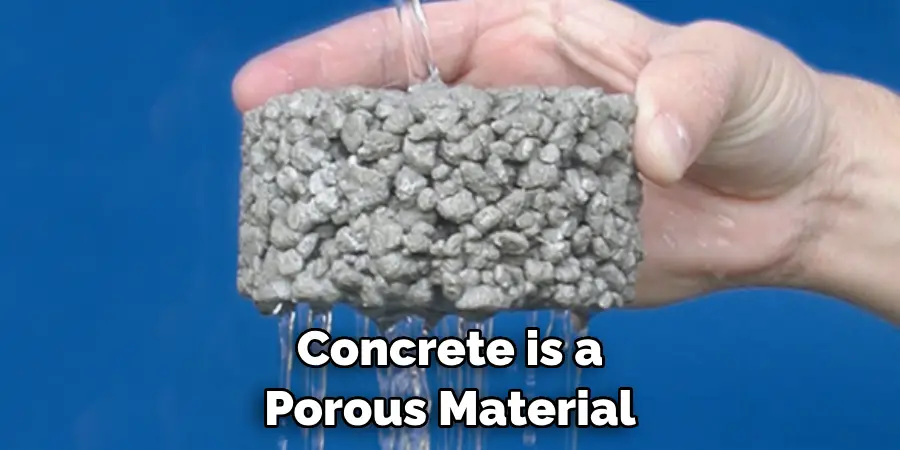
Furthermore, extreme weather conditions such as heavy rain or rapid temperature changes can also cause cracks to form in concrete, allowing even more water to seep into its pores. These cracks not only increase the amount of excess water but can also compromise the structural integrity of the concrete, making it more susceptible to damage.
2. Environmental Factors and Excess Water in Concrete
Apart from weather conditions, other environmental factors can also contribute to excess water in concrete. For instance, poor drainage systems around a building can cause water to collect and seep into the concrete’s pores. Additionally, areas with high groundwater levels or frequent flooding can lead to excess water buildup in concrete structures.
Moreover, the presence of nearby bodies of water or high levels of moisture in the soil can also contribute to excess water in concrete. In these scenarios, the water content in the surrounding environment can transfer into the concrete through capillary action, further increasing its moisture levels.
Techniques for Speeding Up Evaporation Process
Here are some techniques that can help remove excess water from concrete and speed up the evaporation process:
1. Absorption by Dry Materials
One way to remove excess water from concrete is by placing dry materials such as sand, sawdust, or wood chips on the surface of the wet concrete. These materials will absorb the excess water, reducing the drying time.
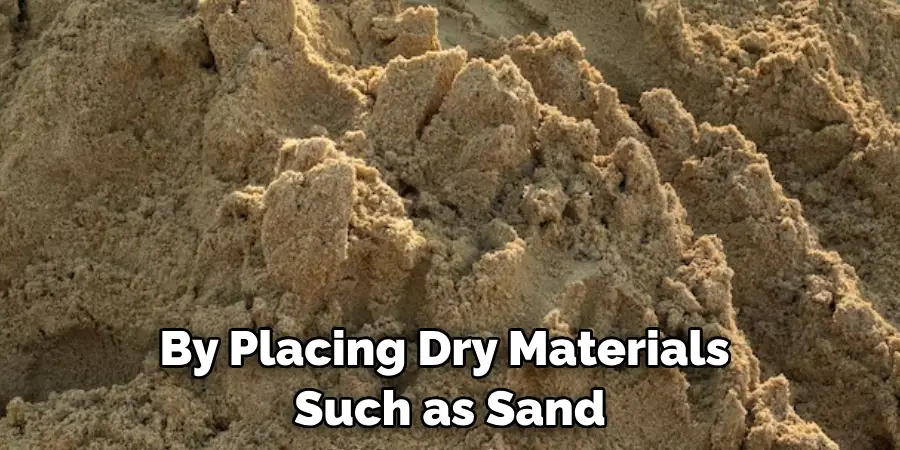
2. Using Fans and Heaters
Another technique is to use fans and heaters to speed up the evaporation process. Fans help in circulating air over the surface of the concrete, while heaters can provide warmth, which aids in drying.
3. Applying Dehumidifiers
A dehumidifier is a device that removes moisture from the air. By using this equipment near the wet concrete surface, it can help pull out excess water from the concrete and speed up the drying process.
4. Adding Chemical Admixtures
There are also chemical admixtures available that can accelerate the drying of concrete. These admixtures work by reducing the surface tension of water, making it easier for moisture to evaporate.
By using these techniques, you can effectively remove excess water from concrete and speed up the evaporation process. However, it is important to note that the amount of time it takes for concrete to dry also depends on factors such as temperature, humidity, and wind conditions.
Conclusion
In conclusion, removing excess water from concrete is an essential step in maintaining the quality and integrity of any concrete structure. However, like any other construction process, it has its disadvantages. One of the main disadvantages of removing excess water from concrete is that it can be time-consuming and labor-intensive.
This process often requires multiple steps and careful monitoring to ensure that the right amount of water is removed without compromising the strength and durability of the concrete.
Moreover, removing excess water from concrete can also be challenging in adverse weather conditions. Rain or high humidity levels can significantly affect the drying process and may result in longer drying times or even failure of the concrete. I hope reading this post has helped you learn how to remove excess water from concrete. Make sure the safety precautions are carried out in the order listed.
